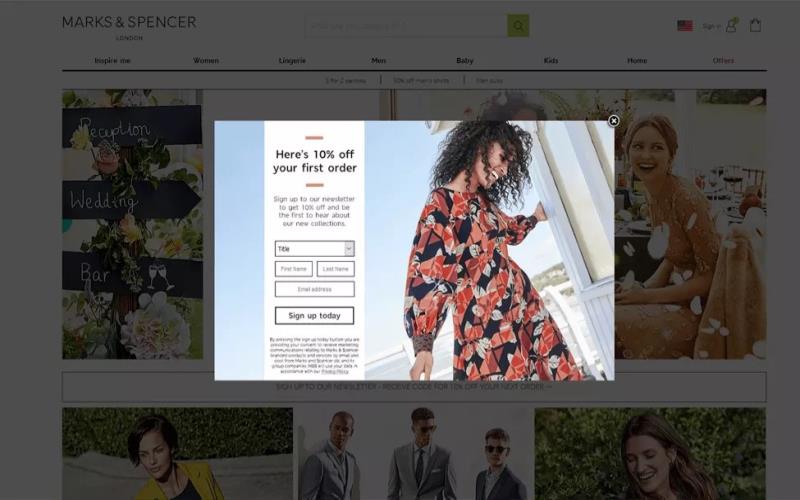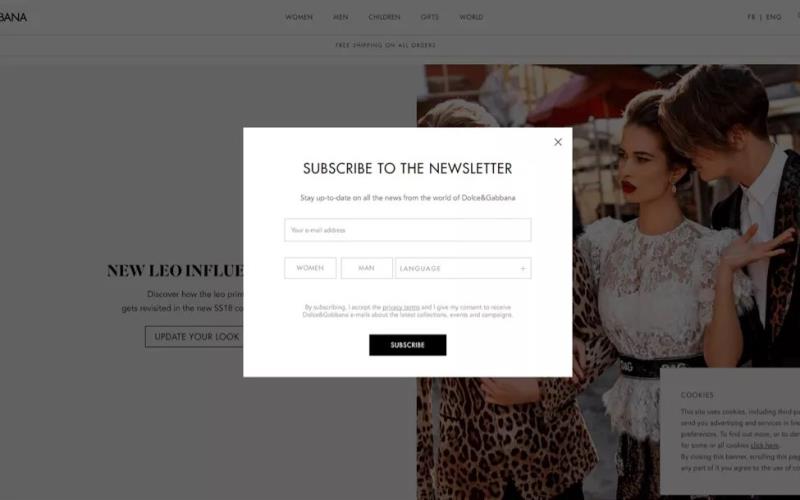There’s no doubt that popups on websites may be annoying, but there is a way to incorporate them into your site without alienating consumers. Popups, when done correctly, are crucial to any effective digital marketing initiative. They can help you grow your consumer base and enhance engagement, benefiting your bottom line. Businesses can easily employ email popups to enhance conversion rates by following simple rules of thumb.
Importance of Email Popups for Online Businesses
Here are some of the main reasons why organizations should employ email popups:
- Lead generation. Email popups can assist organizations in capturing leads by persuading website users to join their email lists. Businesses can use this to create a database of potential clients and leads for future marketing initiatives.
- Improved conversion. Email popups can be deliberately utilized to promote special deals, discounts, or exclusive information, enticing users to make a purchase or take a certain action. This can result in greater conversion rates and, as a result, more sales.
- Targeted marketing. Email popups can be customized based on users’ preferences, demographics, or specific website pages. Businesses can improve the user experience by giving tailored information or offers to their target demographic.
- Customer retention. Businesses can stay in touch with their consumers by collecting email addresses through popups and informing them about new products, services, or discounts. This promotes consumer loyalty and encourages repeat purchases, increasing customer retention.
- Data analysis. Email popups can give useful information and statistics on client preferences, behaviors, and interests. Businesses can utilize this information to fine-tune their marketing tactics, customize their offers, and build more focused and successful campaigns.
- Effective marketing. Email marketing is often seen as a cost-effective method compared to other marketing mediums. Businesses can utilize email marketing to reach a large audience at a low cost by employing email popups to capture leads, making it an effective approach to selling products or services.
- Personalization. Many email popup solutions provide automation and customization features, allowing organizations to develop automatic email sequences, tailored suggestions, and targeted campaigns depending on user preferences and activities.
The Best Creative Email Popup Examples
Dolce & Gabbana
D&G’s mailing popup example has four input fields. Despite this, the design makes it appear as if it is merely asking for your email address.
Marks & Spencer
Yes, this email subscription popup has a lot of fields. However, its bright appearance and simple structure persuaded us to put it on our list of email popups.

Woven Store
This email popup conveys the message quickly, which is essential for engaging potential subscribers. The use of fun typefaces enhances the visual attractiveness of the popup.

Chanty
Chanty’s email capture campaign is wonderful. Including animation in a popup is a brilliant idea. But employing a matrix-inspired animation is simply fantastic. Hands down, one of the most inventive email popup examples we’ve seen.
Wix
This promotion is also an email bar, as seen on Wix’s blog. However, it takes a step further by using contrasting hues that make the bar stand out. It’s also simpler to read because it’s laid out in three columns.
The New Yorker
Let’s finish the list with one of the most prestigious journals, the New Yorker. Their email popup style is simple: no visuals or elaborate illustrations. The sole colorful element is the call to action, intended to entice people to subscribe. The dismiss button is far less appealing.
How to Make Creative Email Popups for Marketing Success
Here are some key points to help you create an appealing email popup:
- Catchy headline. Use an eye-catching title that effectively explains the value offered to your visitors. Explain to them just what they would get by subscribing or supplying their email address.
- Compelling visuals. Include eye-catching visuals, such as high-quality photographs or graphics, that are consistent with your brand and captivate the attention of website visitors. Visual components should be visually appealing as well as relevant to the offer or message being communicated.
- Strong CTA. Use a clear and appealing call to action to entice visitors to act. The CTA should be brief, action-oriented, and prominently in the popup. Use compelling wording to entice people to subscribe or take advantage of the deal.
- Special offers. In return for their email address, give them a reward or an exclusive offer. This might be a discount, a free resource, or access to unique material. To promote sign-ups, make the reward useful and relevant to your target demographic.
- Customize the email popup to your website’s users’ interests and habits. Use dynamic content and personalization tools to provide a more personalized experience that addresses your target audience’s requirements and interests.
- Mobile-friendly design. To give a consistent experience for mobile users, ensure that your email popup is optimized for mobile devices. To verify that the popup is simple to read and interact with on multiple devices, test it on several screen sizes.
- Keep the popup’s appearance and text minimal and concise. Avoid clogging the popup with extraneous information or items that might distract or confuse visitors. To successfully communicate your point, use plain and simple language.
- Testing and optimization. Experiment with multiple variants of your email popup, such as new designs, messaging, or incentives, using A/B testing. Analyze the performance of each version to see what works best for your audience, and utilize the knowledge to improve the success of your email popup.
Conclusion
You can develop an interesting and successful email popup that not only attracts leads but also adds to your overall marketing success by integrating these methods. Keep in mind that balancing the number and timing of popups, offering useful rewards, and creating a smooth user experience are all critical to the success of this marketing approach.

